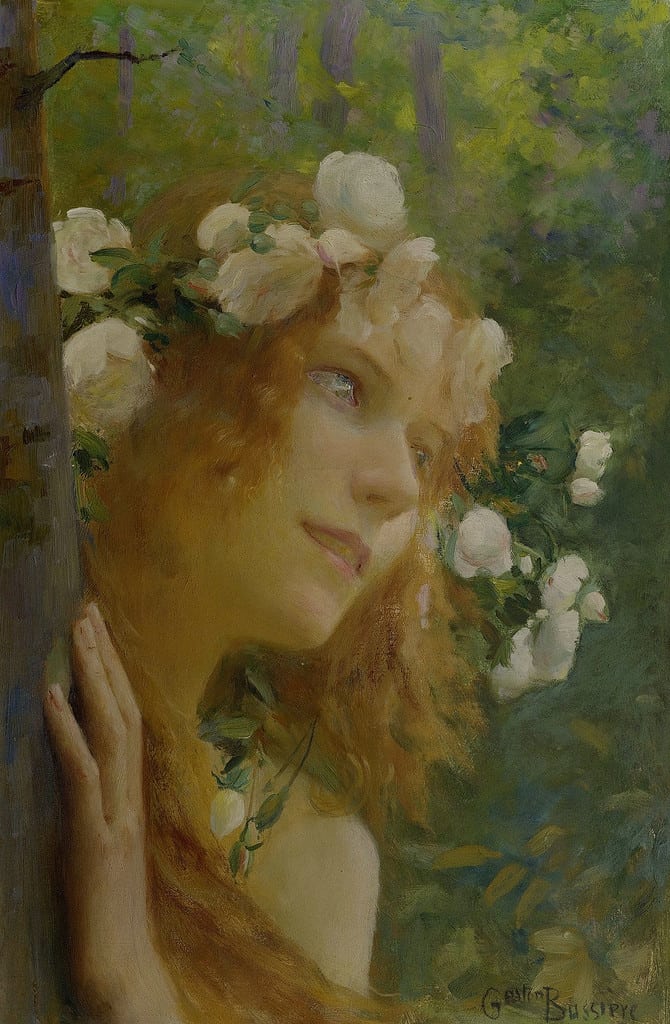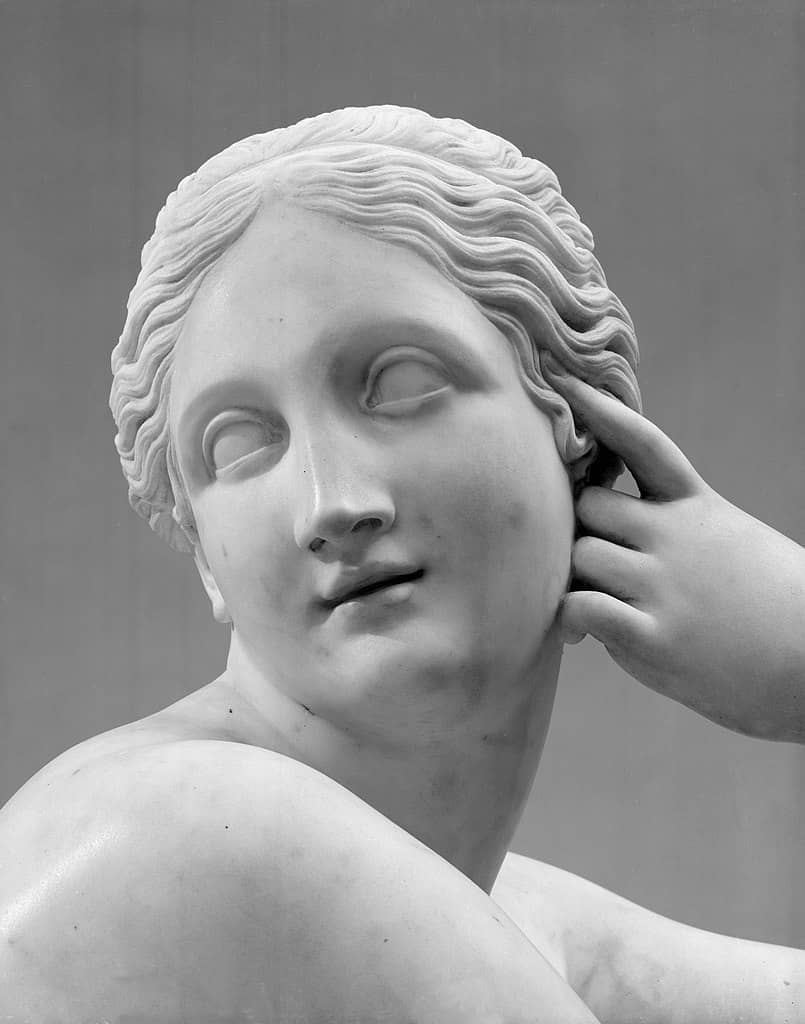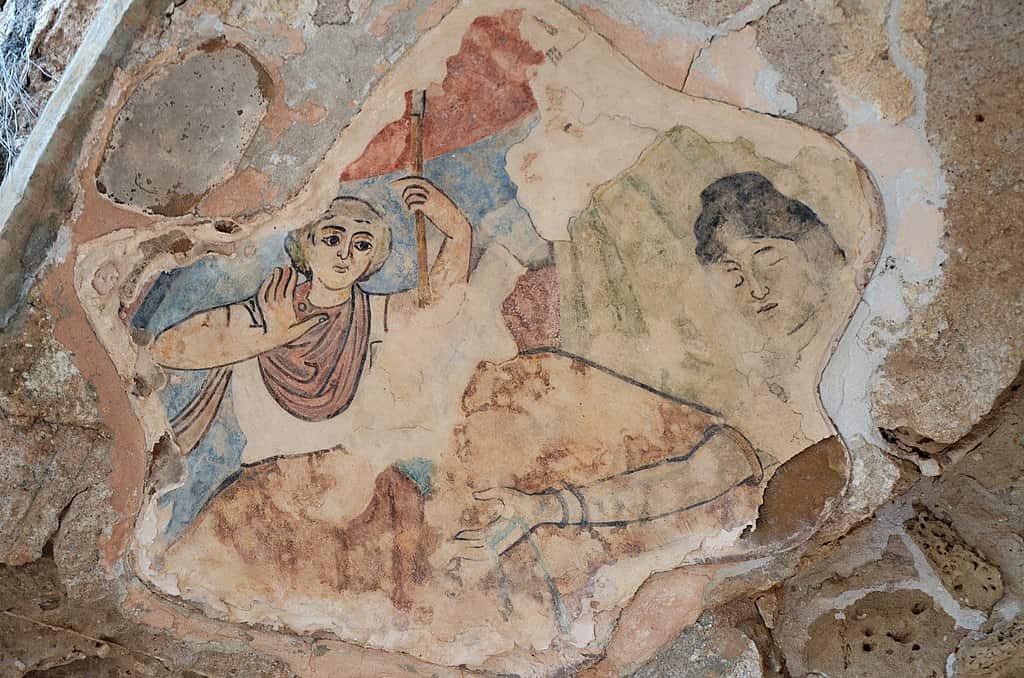Nymphs have long been part of ancient Greek folklore, dating back thousands of years. They are different from goddesses and are considered minor female deities. Nymphs can be spirits tied to certain places. But often, they are personifications of nature. There are the Oreads (mountain nymphs), Dryads (oak tree nymphs), Nereids (sea nymphs), and several more. Discover all there is to know about the Naiads, including their mythological origin, symbolism, and legendary stories.
The Origins and Characteristics of Naiads: What Makes Them Unique?

The Naiads are the daughters of the Potamoi, the gods of rivers and streams.
©Public domain, via Wikimedia Commons – License
Naiads are freshwater nymphs. They are minor female deities that represent streams, springs, fountains, wells, and brooks. But their group is also broken down further by classification.
- Pegaiai = springs
- Potameides = streams
- Limnades = lakes
- Krenaiai = fountains
- Heleionomai = wetlands
The Naiads are the daughters of the Potamoi, the gods of rivers and streams. The Potamoi were the innumerable sons of Oceanus and Tethys. Oceanus is the Titan son of Uranus and Gaia (the ancestral mother), and he is known as the great river that encircles the world. Tethys, a sea goddess with no active role in Greek mythology (no cults were established in her name), was Oceanus’ sister and wife.
The Potamoi had three forms: a man, a man with a bull’s head, and a serpent-like fish with a bull’s head. They were also the brothers of the Oceanids, which were three-thousand freshwater nymphs. Oceanids and Naiads often get confused. And while they are much alike, Naiads are actually the nieces of Oceanids. Naiads are also known for having a dangerous and evil side to them, while Oceanids were usually depicted as helpers and comforters. However, Naiads are most often depicted as beautiful, lighthearted, and charitable. Humans formed cults around these nymphs and worshipped them, especially during coming-of-age ceremonies.
The Role of Naiads in Greek Mythology: Deities of the Water Element

These deities were supposed to be helpful. But in many mythological stories, they are vengeful, angry, and jealous.
©CC0, via Wikimedia Commons – License
The Naiads are young, fair maidens almost always depicted near water or carrying pitchers of water. They were not immortal beings, but they lived longer than humans. They lived and died by the water source they represented. If a Naiad was a nymph of a specific stream or other water feature, they would die if that stream dried up.
They were notable for bringing forth water but also for their water’s healing properties. And they were also the protectors of young women. Girls turning into women would cut off the locks of their hair and throw them into the spring, dedicating them to the local Naiad. They also performed ritual cleansings in freshwater springs for their magical healing powers. Some cultures even practiced ritual animal drownings to honor these nymphs.
These deities were supposed to be helpful. But in many mythological stories, they are vengeful, angry, and jealous. They were the lovers of many gods due to their alluring beauty and seductress ways, but their tempers got the best of them. Wetland nymphs would cause people to become lost in marshes and swamps just because they could. But despite their dangerous ways, many chased after them. And most prominent figures of Greek mythology have a Naiad in their bloodline somewhere.
The Legendary Stories of Naiads: Tales of Love, Betrayal, and Revenge

Fresco in the bath complex depicting the myth of Hylas and the water nymphs, end of 3rd century AD, Salamis, Northern Cyprus
©CC BY-SA 2.0 – License
Many gods took Naiads as lovers, including Apollo, Zeus, Poseidon, and Hades. One of the most famous tales of the Naiads is when three maidens spotted one of Hercules’ companions, Hylas, and lusted after him due to his beauty. The nymphs kidnap him. And his crew, the Argonauts, sail off without him, except for Hercules, who vows to never stop looking for Hylas. However, some theories suggest he does not want to be found because he falls in love with the Naiads.
But there is no doubt that the Naiads have a mean streak. The nymph, Nomia, was the lover of Daphnis, a Sicilian shepherd. After he was unfaithful to her on several occasions, Nomia permanently blinds him. Another nymph named Salmacis rapes Hermaphroditus, a boy child of Aphrodite and Hermes. When he attempts to flee, Salmacis fuses herself with him, transforming him into a hermaphrodite. Hermaphroditus is often depicted as a woman with male genitalia.In the Iliad, an ancient Greek epic poem, Zeus calls an assembly on Mount Olympus. Along with the most well-known Olympians, are the nymphs and all the rivers. This doesn’t so much as signify their importance but their inseparability from specific locations.
The photo featured at the top of this post is © iStock.com/MAXIM ZHURAVLEV
Thank you for reading! Have some feedback for us? Contact the AZ Animals editorial team.






